How RAF Typhoons and their pilots’ bionic helmets helped Israel repel Iran’s drone onslaught
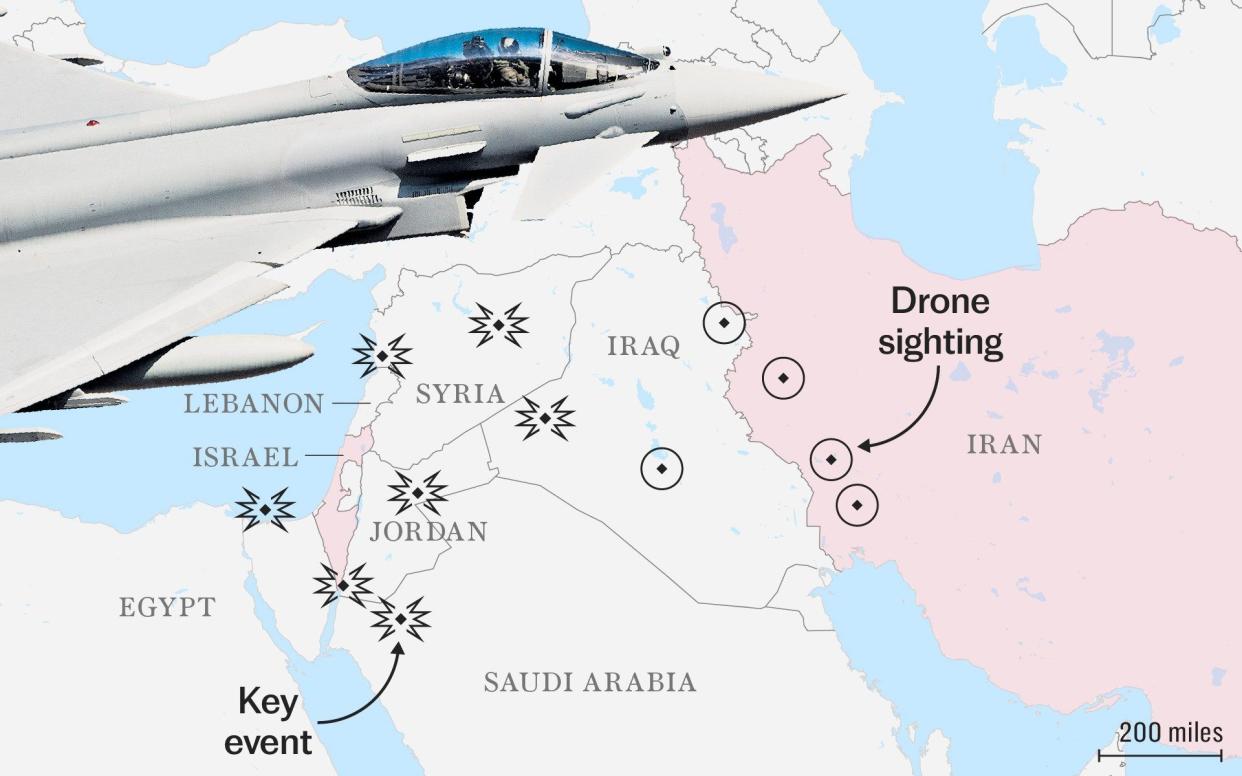
Four RAF Typhoons based in Cyprus were scrambled as soon as it became clear late Saturday evening that Iran had launched an unprecedented drone swarm attack against Israel.
The pilots, all of whom had taken part in numerous sorties as part of the UK’s Operation Shader Mission against Islamic State, had been briefed and were on standby.
Even before the aircraft were airborne, they had been given legal clearance - signed off by Rishi Sunak at a Cobra meeting in Downing Street - to engage hostile enemy drones en-route to Israel.
Using signals intelligence supplied by the secretive Joint Service Signal Unit based at Ayios Nikolaos, in Cyprus, which monitors much of the Middle East, the aircraft headed for the Iraq-Syria border.
The Typhoon FGR4 multi-role fighter jets were deployed over Iraq and Syria, but not Israel, the Ministry of Defence said.
It is understood that the RAF jets shot down somewhere between 10 and 20 Shaheed “suicide” drones. Each aircraft has the capability to carry six medium-range and two short-range air-to-air missiles.
Their precision was aided by the Helmet-Mounted Symbology System (HMSS), a “bionic” helmet and support system that lets the pilot “see” through the body of the aircraft, giving them a vital advantage when it comes to split-second decision-making.
Conventional systems mean pilots have to point the aircraft in the direction they want to fire to get the enemy in a field of view before they engage their weapons. The helmet system allows the pilot to let his helmet do the pointing without having to waste vital time manoeuvring the aircraft - giving a big advantage in combat.
The RAF were joined in the skies by Jordanian, US and Israeli forces. Footage released by the Israel Defense Forces (IDF) shows their fighter jets picking off Iranian drones and missiles one by one.
Israel and its allies, including the UK, were preparing for 10 days for an Iranian attack, according to a senior US military official. Israel claims 99 per cent of the more than 330 drones, cruise and ballistic missiles fired from Iran were shot down.
One Israeli official described their country’s response as “the most complex air defence events recorded”. Most of the intercepts of the ballistic missiles were reportedly carried out by Israeli systems.
Rare footage appeared to capture Israel shooting down a ballistic missile outside of the earth’s atmosphere known as a “exoatmospheric” interception.
According to the army, Iran launched 30 cruise missiles, 120 ballistic missiles and 170 drones. The attacks were launched from Iran, Iraq, Yemen and Lebanon, marking the most serious multi-front attack against Israel in decades.
At least one of the ballistic missiles was shot down by the Arrow Weapon System which is the world’s first operational, national, standalone ATBM (Anti Tactical Ballistic Missiles) defence system. The Arrow 3 is the latest, most advanced system, with an exoatmospheric hypersonic anti-ballistic missile.
Israel also deployed its Iron Dome missile system, the most well known of its defences that has protected the country against rockets from Hamas, Islamic Jihad and Hezbollah since it became operational in 2011.
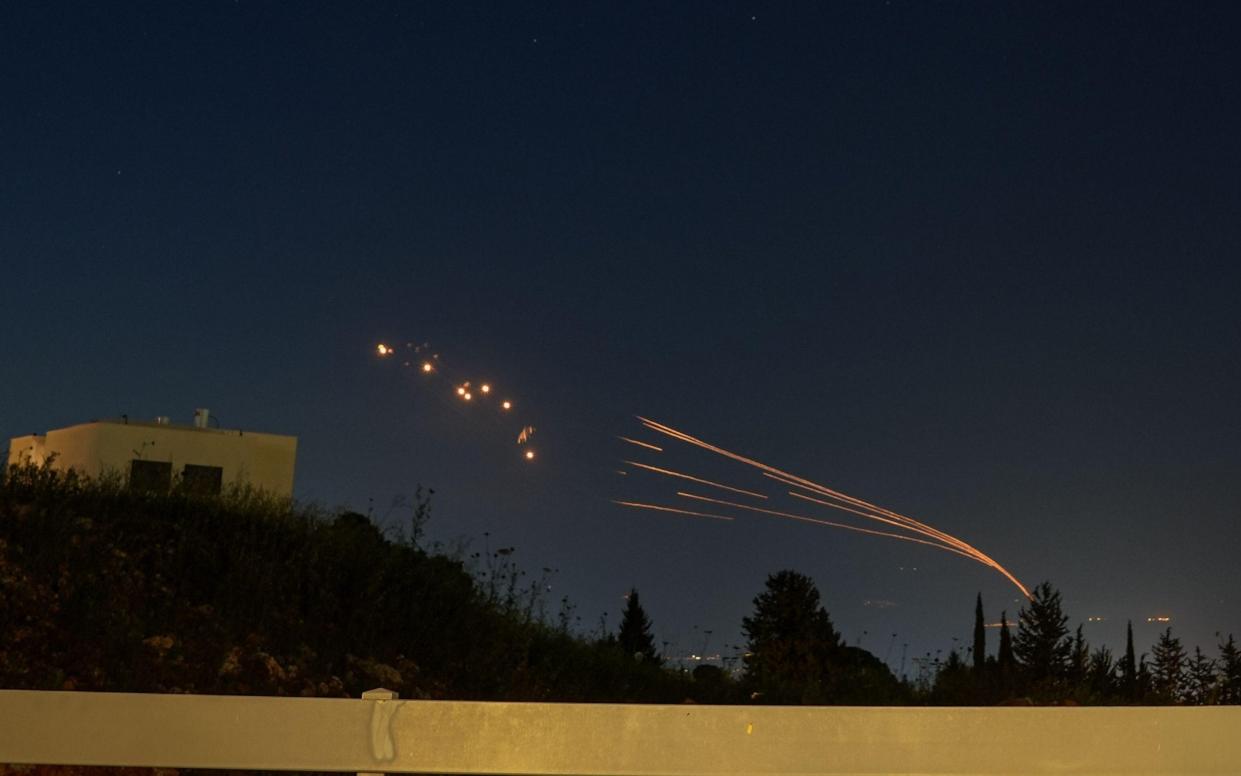
The Israeli military also used David’s Sling, which became operational in 2017 and protects against large-calibre
rockets, short-range ballistic missiles, cruise missiles, aircrafts and drones.
Combined, this umbrella of missile defence systems has protected Israel against incoming missiles, drones and rockets since Oct 7.
While the IDF is yet to release data on exactly which types of cruise and ballistic missiles were fired at Israel, and from where, experts say that many of the drones and cruise missiles were shot down by Israeli F-35 fighter jets.
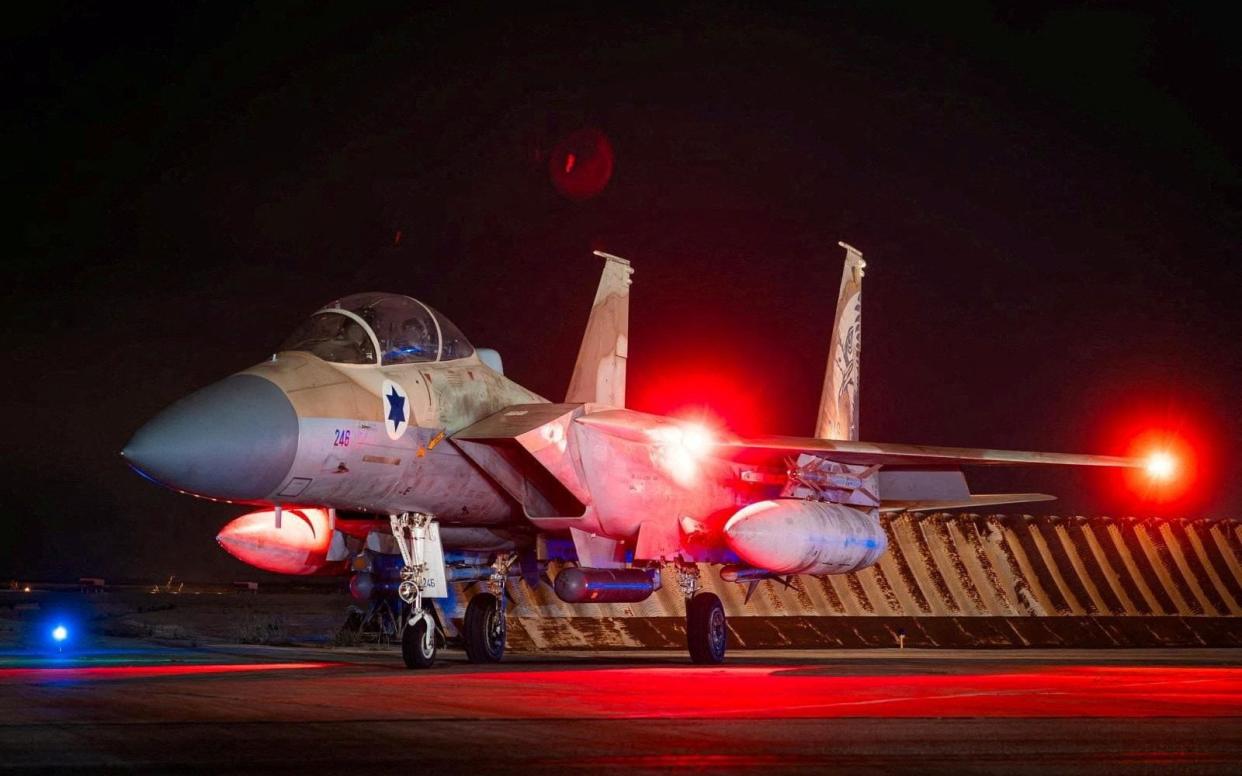
Most of the drones flying over Syria’s airspace were downed by Israeli and US jets, citing two Western intelligence sources, according to Reuters.
Early warning
The first clue for civilians that something was afoot came in the skies above Iraq. At around 8pm local time, flights were criss-crossing overhead in typical fashion, but by 10pm they had cleared completely as the airspace was closed abruptly.
Soon, drones were spotted travelling from Iran towards Israel, where sirens sounded warning Israelis to seek immediate shelter.
In western Kermanshah, near Iran’s border with Iraq, civilians were jolted awake by the buzzing of drones overhead and the ominous whirr of missiles.
“At first, I suspected a problem with the electricity in my home, but then I heard the panicked cries of people outside,” said Tawab, an Iranian farmer. “I rushed outside and just heard the sounds. It felt like our worst nightmare came true.”
“I rushed outside and just heard the sounds,” he said. “It felt like our worst nightmare came true.”
For nearly two weeks, Israel had been on high alert, bracing for a retaliatory attack after a suspected Israeli air strike killed seven Iranian military officers in Syria.
As the skies darkened on Saturday evening, Israeli prime minister Benjamin Netanyahu convened his war cabinet at the Kirya, or “The Campus,” in Tel Aviv.
Dressed sharply in a suit, one picture released by the government showed Mr Netanyahu surrounded by his top military and political advisers gathered around a long table.
Thousands of miles away, Joe Biden cut short a weekend beach trip to rush back to the White House.
The president took off from Reheboth Beach, Delaware, in Marine One, the helicopter used for his personal transport, and landed at Joint Base Andrews on the outskirts of Washington DC to meet with his national security team. He then travelled back to the White House by motorcade and met top members of his Cabinet in the situation room.
The meeting included Lloyd Austin, the defence secretary, Antony Blinken, the Secretary of State, and William Burns, the director of the CIA.
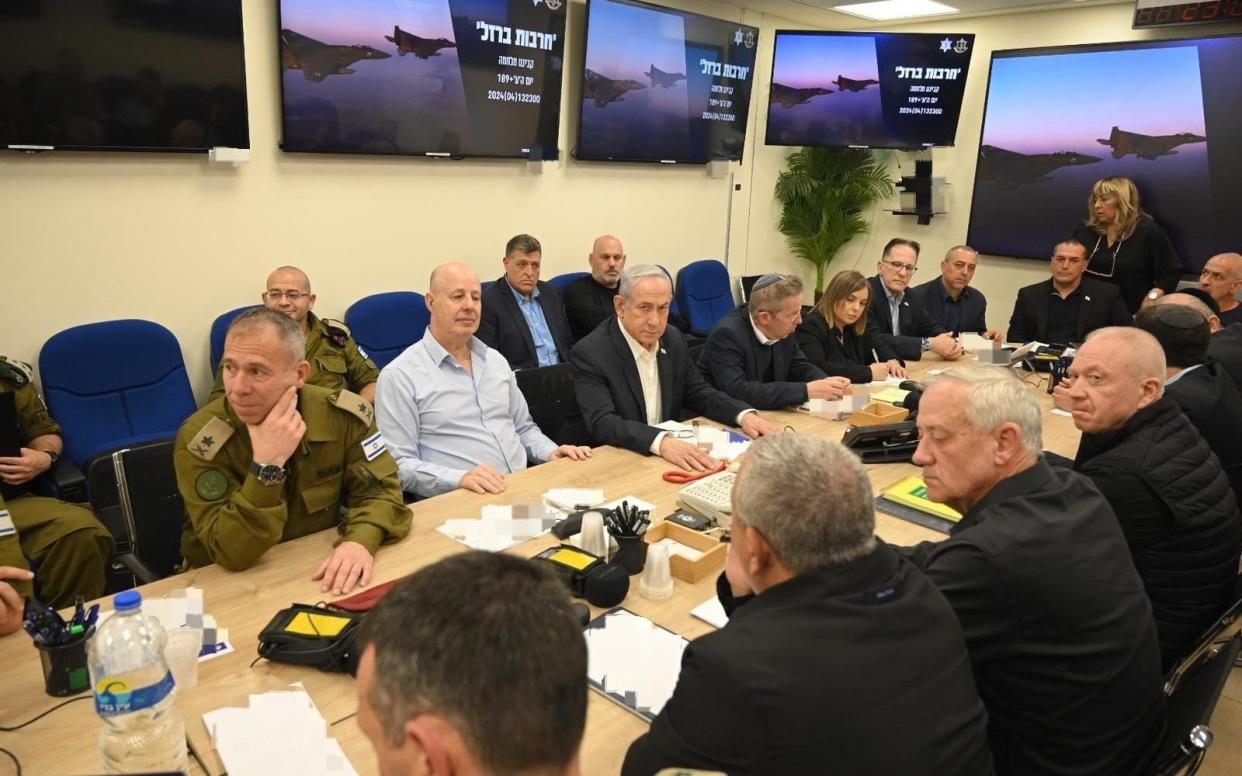

Also at the meeting were Jake Sullivan, Mr Biden’s national security adviser, and Gen Charles Brown, the chairman of the Joint Chiefs of Staff. Kamala Harris, the vice-president, joined via video call.
The Iranian onslaught was supported by its many armed proxy groups in the Middle East.
A slew of drones were reportedly fired from Yemen by Iran-backed Houthi rebels. And a volley of rockets, as many as 55 in just one hour, were shot into northern Israel by Hezbollah, the Lebanese militant group also linked to Iran.
Iran later claimed in state media that half of the fired missiles hit their designated targets, including exploding on Israeli air bases. Neither Iran’s claim, nor the Israeli claim to have destroyed most of the drones, have been independently verified.
Flurry of calls from Washington
Either way, by the time the sun rose on Sunday, the sky seemed clear, at least for now.
A whirlwind of condemnation of Iran had swept in overnight, including from Mr Sunak who said that Iran’s “reckless” attack would prompt Britain to “stand up for Israel’s security.”
“These strikes risk inflaming tensions and destabilising the region,” said the Prime Minister. “Iran has once again demonstrated that it is intent on sowing chaos in its own backyard.”
For Israel, there will be no other option but to respond.
On Sunday night, a spokesman for the IDF said plans had been drawn up for both “offensive and defensive” action against Iran.
But Mr Netanyahu will have to decide on just how to do that. “The State of Israel is strong, the Israel Defence Forces is strong, the people of Israel are strong,” Mr Netanyahu said. “Together we will stand, and with God’s help, together we will overcome all our enemies.”
He will also need to consider whether Israel will be forced to act alone, as Mr Biden has reportedly already told him that the US will not participate in any offensive against Iran.
That message was delivered in a flurry of calls between the US and Israel overnight – between Mr Netanyahu and Mr Biden and between Mr Austin and the Israeli defence minister Yoav Gallant.
Mr Netanyahu called his US counterpart at around 3am Israel time while with his war cabinet. Mr Biden received real-time updates in the situation room according to a senior US administration official
For Iran, the regime is crowing of a major win against the “terrorists” of Israel and America. The cover of the state-run Tehran Times warned: “Next Step Will be Fiercer”.
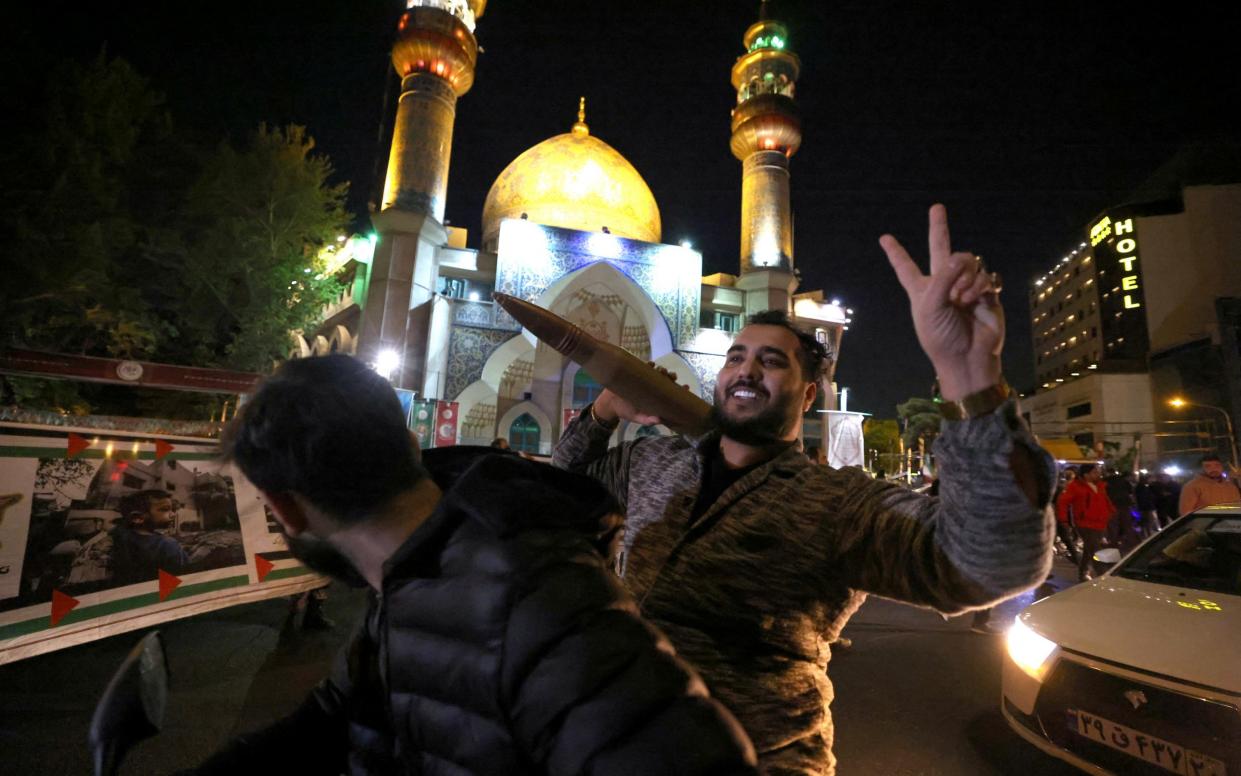
The enthusiasm was not shared by all. As one commentator on social media put it: “The regime’s bluff of ‘huge victory and revenge’ was called by its total failure to hit anything inside Israel.
“In reality, the 300 missiles and drones hit the pockets of our people, making them poorer and causing another free fall in the value of the rial.”
Sean Rayment is the Defence and Security Editor of National Security News


